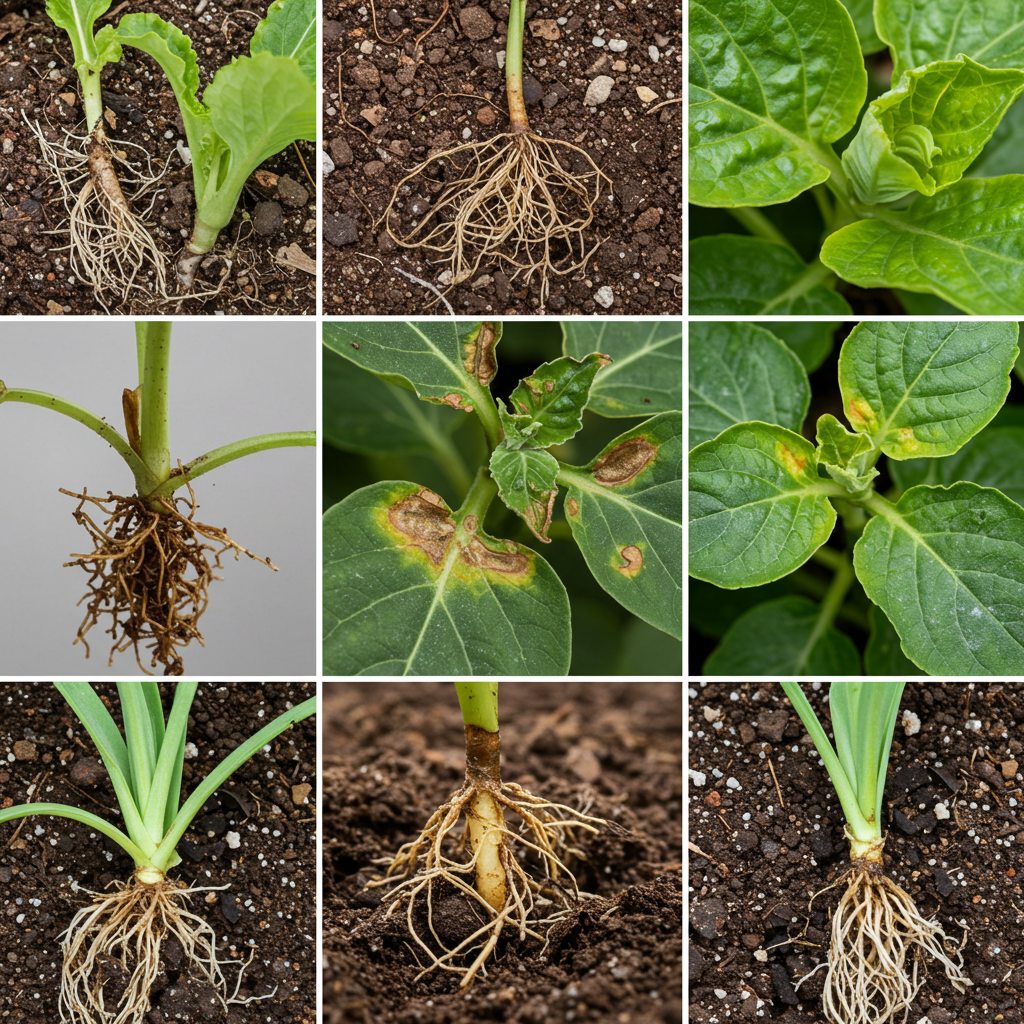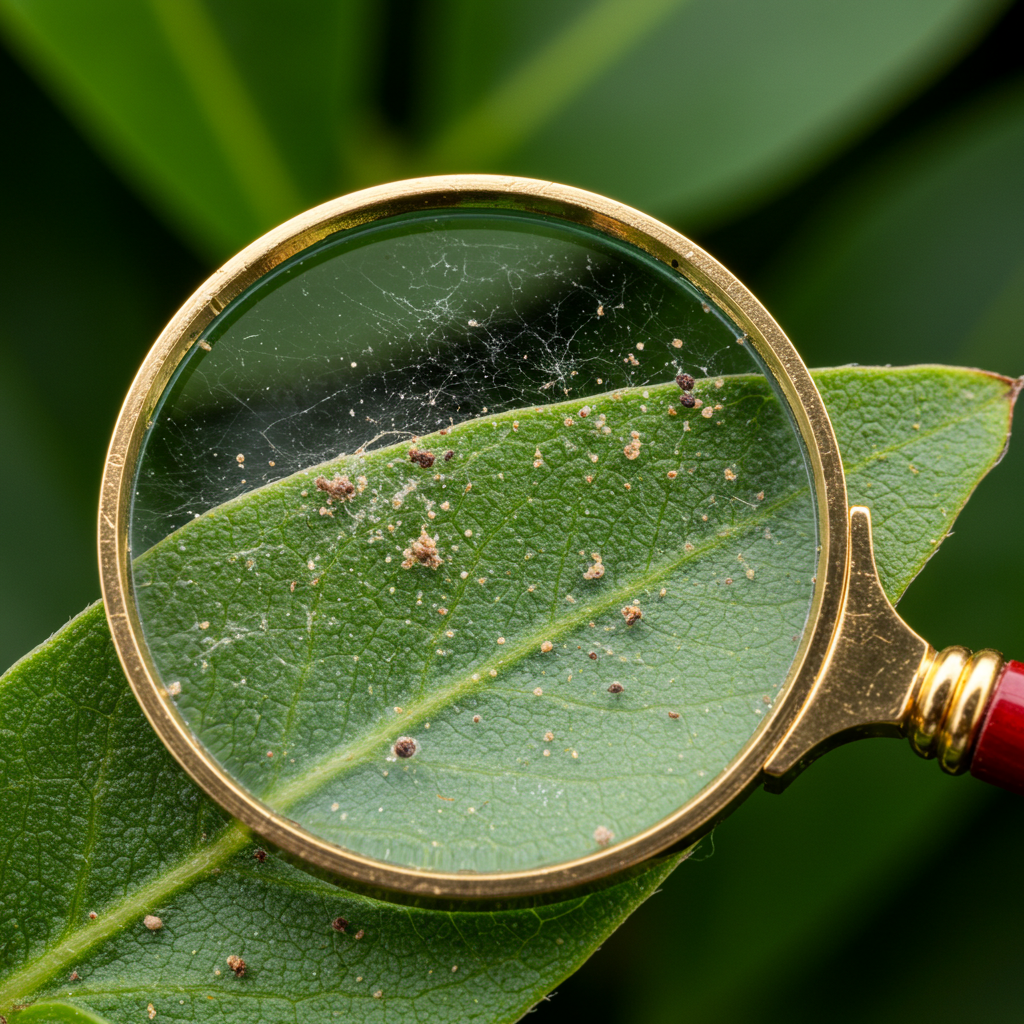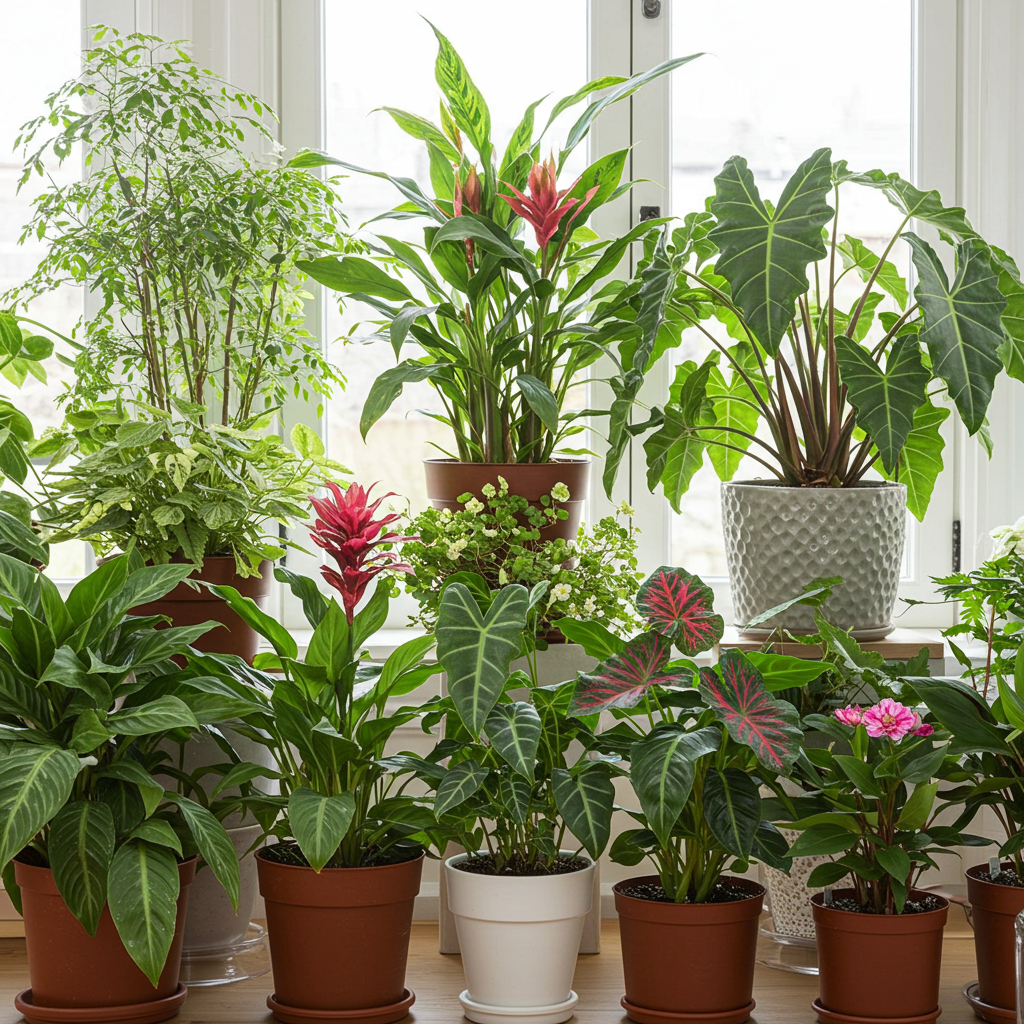There’s nothing quite as disheartening for a gardener as seeing their beloved plants wither and die. One day they’re thriving, full of life, and the next, they’re droopy, discolored, or worse – completely gone. If you’ve ever found yourself asking, “Why are my plants dying?” you’re not alone. It’s a question every plant enthusiast faces eventually. But don’t despair! Most plant problems have identifiable causes and, more importantly, solutions.
This comprehensive guide will help you troubleshoot the most common garden issues, from subtle nutrient deficiencies to aggressive pest attacks, and equip you with the knowledge to revive your dying plants and ensure a flourishing garden.
The Top Culprits: Common Reasons Your Plants Are Dying
Diagnosing a dying plant can feel like detective work, but by systematically checking for common issues, you can often pinpoint the problem. Let’s delve into the most frequent causes:
1. Watering Woes: Too Much or Too Little
Watering is perhaps the most crucial aspect of plant care, and ironically, also the most common mistake. Both overwatering and underwatering can lead to similar-looking symptoms, making diagnosis tricky.
#### Overwatering:
- Symptoms: Yellowing leaves (especially lower ones), soft and mushy stems, wilting despite wet soil, stunted growth, foul odor from the soil, mold on the soil surface, root rot.
- Why it happens: Excess water deprives roots of oxygen, essentially suffocating them. This leads to root rot, where roots turn soft, brown, and unable to absorb water and nutrients.
- Solutions: Immediately reduce watering. Allow the soil to dry out significantly between waterings. Ensure pots have adequate drainage holes. For severely overwatered plants, gently remove them from the pot, trim away any rotted roots (they’ll be soft and dark), and repot into fresh, well-draining soil.
#### Underwatering:
- Symptoms: Drooping leaves and stems, crispy or dry leaf edges, brown and shriveled leaves (often starting from the bottom), very dry and compacted soil.
- Why it happens: Plants need water to transport nutrients and maintain turgor (the internal pressure that keeps them firm). Without enough water, cells lose turgidity, causing the plant to wilt.
- Solutions: Water thoroughly until water drains from the bottom of the pot. For very dry soil that has become hydrophobic, soak the entire pot in a basin of water for 30 minutes to an hour. Establish a consistent watering schedule based on the plant’s needs and environmental conditions.
2. Light-Related Issues: Too Much or Not Enough
Light is essential for photosynthesis, the process by which plants convert light energy into food. The wrong amount of light can severely impact your plant’s health.
#### Not Enough Light:
- Symptoms: Stretched or leggy growth with sparse leaves (etiolation), smaller leaves, pale green or yellow leaves, failure to flower, overall stunted growth.
- Why it happens: Plants reach for light sources, resulting in elongated stems. Lack of light also reduces photosynthesis, leading to energy deficiency.
- Solutions: Move the plant to a brighter location. Consider supplemental grow lights for indoor plants during darker months.
#### Too Much Light (Sunburn):
- Symptoms: Brown or white scorched patches on leaves, crispy leaves, fading color, leaves curling inwards.
- Why it happens: Intense, direct sunlight can literally burn plant tissues, especially for plants accustomed to lower light conditions or newly moved outdoors.
- Solutions: Move the plant to a location with less direct light or provide partial shade, especially during the hottest parts of the day. Acclimate plants gradually when moving them to brighter spots.
3. Nutrient Deficiencies and Excess
Just like us, plants need a balanced diet of macro and micronutrients to thrive. An imbalance can lead to various problems.
#### Common Deficiencies:
- Nitrogen (N): Yellowing of older leaves, stunted growth. (Solution: Nitrogen-rich fertilizer, compost).
- Phosphorus (P): Purple or dark green leaves, stunted growth, poor flowering. (Solution: Phosphorus-rich fertilizer, bone meal).
- Potassium (K): Yellowing or browning of leaf edges, weak stems. (Solution: Potassium-rich fertilizer, wood ash).
- Iron (Fe): Yellowing between the veins of new leaves (chlorosis). (Solution: Iron chelate, adjust soil pH).
- Symptoms: Generally, discolored leaves (yellowing, purpling, browning), stunted growth, poor flowering or fruiting.
- Solutions: Use a balanced fertilizer according to package directions. Conduct a soil test to understand your soil’s specific deficiencies. Organic matter like compost can naturally improve nutrient availability.
#### Nutrient Burn (Excess Nutrients):
- Symptoms: Brown leaf tips or edges, stunted growth, salt crust on the soil surface.
- Why it happens: Too much fertilizer can cause salt buildup in the soil, drawing water out of the plant roots.
- Solutions: Flush the soil with plenty of clean water to leach out excess salts. Reduce fertilizer application or use a weaker solution.
4. Pesky Pests and Diseases
Tiny invaders can wreak havoc on your garden. Regular inspection is key to early detection and treatment.
#### Common Pests:
- Aphids: Small, pear-shaped insects often found on new growth, causing distorted leaves and sticky honeydew.
- Spider Mites: Tiny arachnids that create fine webs and cause speckling on leaves.
- Mealybugs: White, cottony pests found in leaf axils and on stems.
- Whiteflies: Small, white, moth-like insects that fly up when disturbed, found on the undersides of leaves.
- Symptoms: Visible insects, sticky residue (honeydew), chewed leaves, distorted growth, discolored spots, webbing.
- Solutions: Isolate infested plants. Spray with insecticidal soap, neem oil, or a strong stream of water. Introduce beneficial insects. For severe infestations, chemical pesticides may be necessary as a last resort.
#### Common Diseases:
- Fungal (e.g., Powdery Mildew, Rust): White powdery spots, orange or brown pustules on leaves.
- Bacterial (e.g., Leaf Spot): Water-soaked spots, often with yellow halos.
- Viral (e.g., Mosaic Virus): Mottled, distorted, or yellowing leaves.
- Symptoms: Spots, lesions, wilting, stunted growth, mold, rot.
- Solutions: Remove and destroy infected plant parts. Improve air circulation. Avoid overhead watering. Use fungicides or bactericides as appropriate. Prevention is key: choose disease-resistant varieties and practice good garden hygiene.
5. Environmental Stressors
Plants are sensitive to their surroundings. Extreme or sudden changes can cause significant stress.
- Temperature Extremes: Too cold (frost damage, stunted growth) or too hot (wilting, scorched leaves).
- Humidity: Too low (crispy leaf tips, especially for tropical plants) or too high (fungal issues).
- Air Circulation: Poor circulation can lead to fungal diseases.
- Solutions: Protect plants from frost. Provide shade during heatwaves. Use humidifiers or pebble trays for humidity-loving plants. Ensure good air flow by spacing plants appropriately and using fans indoors.
6. Root Problems and Potting
What’s happening beneath the soil surface is just as important as what’s above.
- Root-Bound: Roots circling tightly around the inside of the pot, causing stunted growth and nutrient uptake issues.
- Incorrect Pot Size: Too small (restricts growth), too large (soil stays wet too long, leading to rot).
- Poor Drainage: Pots without drainage holes, or compacted potting mix, lead to waterlogging.
- Symptoms: Stunted growth, rapid drying out despite watering (root-bound), wilting, yellowing, roots growing out of drainage holes.
- Solutions: Repot root-bound plants into a slightly larger pot (1-2 inches wider). Choose appropriate pot sizes. Always use pots with drainage holes and well-draining potting mix.
7. Unsuitable Soil
The foundation of plant health lies in the soil. Poor soil can hinder growth and nutrient absorption.
- Compacted Soil: Prevents roots from spreading and reduces oxygen.
- Incorrect pH: Affects nutrient availability; some plants prefer acidic, others alkaline.
- Poor Nutrient Retention: Sandy soils drain too quickly, clay soils retain too much water.
- Symptoms: Stunted growth, nutrient deficiencies, poor water absorption, overall unhealthy appearance.
- Solutions: Amend compacted soil with organic matter. Conduct a soil pH test and adjust as needed with lime (to raise pH) or sulfur (to lower pH). Improve soil structure with compost, perlite, or vermiculite.
Troubleshooting Your Dying Plant: A Step-by-Step Guide
When your plant looks unwell, don’t panic! Follow these steps to diagnose and treat the problem:
1. Observe Closely: Examine the entire plant – top and bottom of leaves, stems, soil surface, and even roots if possible. Look for specific symptoms like spots, discoloration patterns, visible pests, or strange growth.
2. Review Care Routine: Think about recent changes in watering, light, fertilization, or temperature. Have you moved the plant? Changed its pot? Altered its watering schedule?
3. Check the Soil: Stick your finger 1-2 inches into the soil. Is it bone dry, soggy, or just right? Check for unusual smells.
4. Inspect for Pests: Use a magnifying glass if necessary. Look for tiny insects, webs, or sticky residue.
5. Assess Light: Is the plant getting too much or too little light for its specific needs?
6. Consider Environment: Are temperature and humidity levels appropriate for the plant type?
7. Isolate (If Pests/Disease): If you suspect pests or disease, move the affected plant away from others to prevent spread.
8. Implement Solutions Gradually: Don’t try to fix everything at once. Start with the most likely cause and observe the plant’s response over a few days before making further changes.
Preventative Measures for a Thriving Garden
Prevention is always better than cure. By adopting good gardening practices, you can significantly reduce the chances of your plants dying.
- Know Your Plants: Research the specific needs (light, water, humidity, soil type) of each plant you bring home.
- Proper Watering: Water deeply and thoroughly, but only when the topsoil is dry. Use your finger to check moisture levels.
- Adequate Light: Place plants in locations that match their light requirements. Rotate indoor plants regularly for even growth.
- Good Soil and Drainage: Use high-quality potting mix with excellent drainage. Ensure all pots have drainage holes.
- Regular Fertilization: Feed your plants with a balanced fertilizer during their growing season, following instructions carefully.
- Pest and Disease Scouting: Inspect your plants regularly (at least weekly) for any signs of trouble. Early detection is key.
- Good Air Circulation: Space plants appropriately and ensure good airflow to prevent fungal diseases.
- Quarantine New Plants: Isolate new plants for a few weeks before introducing them to your existing collection to prevent the spread of pests or diseases.
- Clean Tools: Sterilize pruning shears and other tools between uses to avoid spreading pathogens.
- Repot When Necessary: Don’t let plants become severely root-bound. Repot into slightly larger containers as they grow.
Conclusion
Seeing your plants struggle can be frustrating, but armed with the right knowledge, you can often turn the tide. Most plant problems boil down to a few common issues related to water, light, nutrients, pests, or environment. By observing closely, understanding your plant’s needs, and implementing systematic troubleshooting, you’ll be well on your way to a healthier, more vibrant garden.
Remember, every gardener faces challenges, and learning from dying plants is part of the journey. Don’t give up! With a little patience and persistence, you can revive your plants and enjoy the lush, green sanctuary you’ve worked so hard to create.



